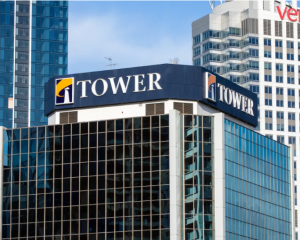
A Southland Murihiku Regional Energy Strategy 2022-2050 report released by Great South yesterday revealed the direction of the province’s decarbonisation pathway would primarily depend on whether Tiwai Smelter, part-owned by Rio Tinto, closed at the end of 2024 or remained open.
A closure would result in an over-supply of electricity from the Manapouri hydro-electric station which could be used locally for the proposed Southern Green Hydrogen (SGH) and ammonia plant or be rerouted to northern centres on an aged and inadequate network causing large transmission losses.
New industries located close to Tiwai could potentially repurpose the smelter’s electricity infrastructure.
But if both plants were operational, hydro-electric generation, as well as wind, would be needed to secure an adequate industrial electricity supply.
At present, "the electricity network is vastly undersized".
The report says hydrogen production and storage should be investigated, regardless of the planned SGH facility.
The report, prepared by Beca commissioned by Great South in partnership with Murihiku regeneration, revealed the infrastructure network would require significant upgrades to cope with the additional loads from new industries, including a data centre and the world’s largest hydrogen plant.
The report noted high demand industries located near Awarua or Makarewa would require a network upgrade, as well as a substation upgrades which needed to be given priority.
The province would need to ensure there was continued access to a reliable and uninterrupted power supply if it was to attract new industry to the region.
In the event Tiwai closed and the SGH plant was not built, many substations were inadequate to redistribute the supply to new demand points but upgrading the infrastructure would be a challenge under current regulation.
"Most zone substations are not able to deliver a secure supply of electricity to the end user, meaning maintenance will cause a black-out or reduction supply. This proposes a risk to industrial process that require a constant supply and may be a barrier to decarbonisation, or the establishment of new industry ..."
Southland Murihiku could potentially become self-sufficient, or a net exporter of renewable energy, but new generation investment was required.
New power sources would need to be established close to a grid to allow them to be easily linked.
Options considered included onshore wind farms, bio-gas, solar, methane gas recovery from the dairy sector as well as waste-to-energy and wave/tidal generation and offshore wind.
Onshore wind farms, the cheapest form of new electricity, were a likely solution, and more than 100 potential sites had been identified. Kaiwera Downs, Blackmount, Kuriwao Peak-Kaihiku Range and Venlaw Station were being investigated as potential sites.
The strategy prioritised wind farms, followed by a mix of Otago hydro generation, large solar development north of Te Anau, Mossburn, and possibly Fairlight, or off-shore wind farms.
Southland had the highest per capita greenhouse gas emissions by region but the province was leading the nation converting fossil fuel boiler systems to renewable energy and 89 of 186 boilers had already been converted.
But a four-fold increase in woodchip supplies (biomass) demand would be required to ensure adequate supplies.
- By Toni McDonald












